Living Abroad in Cinque Terre, Liguria, Italy
Enjoy the Dolce Vita in a Real Italian Village
By E.J. Baumeister Jr.
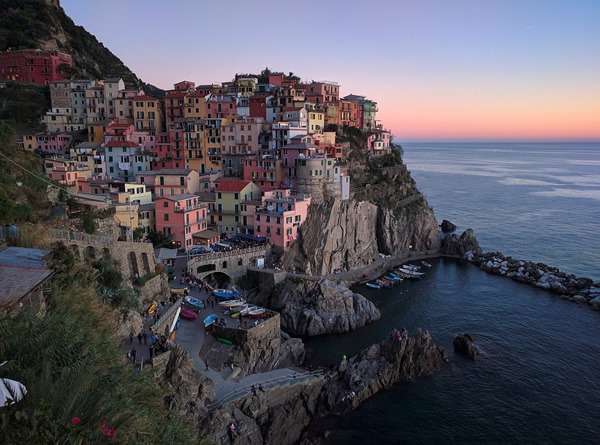 |
Vernazza is one of the five villages that make up the Cinque Terre. |
Most European countries permit foreigners to stay for up to three months with no visa requirement, long enough to gain a feel for the country and discover what a longer stay would be like. The trick is to find a place for
an extended stay that will provide some support to you as a foreigner but at the same time allow you to interact with the locals and experience community life, including the occasional frustration over practical matters.
While hordes invade the Italian peninsula every year to absorb its many pleasures, numberless villages are untouched by tourists, especially in regions not yet “discovered.” The Abruzzo comes to mind.
But going deep into Italy runs a risk of being a bit too cut off. The trick is to find places that are relatively easy to access and where the residents are at least friendly toward someone struggling with the language.
Such a place is the village of Corniglia, population of less than 200.
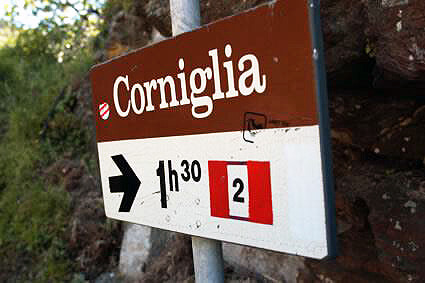 |
A typical sign post along the Cinque Terre trail from Monterosso to Riomaggiore. Photo by E.J. Baumeister Jr.
|
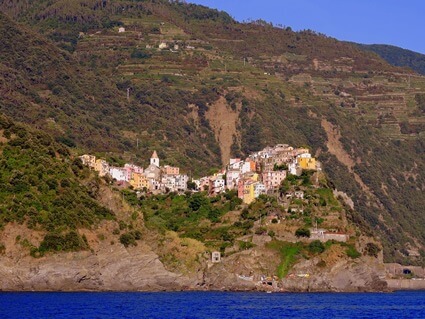 |
The village of Corniglia is 300 feet above the sea. |
Corniglia is not really undiscovered. It is the smallest of the five towns in Liguria, in Italy’s northwest. The region, better known as "Cinque Terre," is a popular and relatively affordable destination
sometimes called the Riviera for Wage Earners.
All of the Cinque Terre towns are accessible by boat except Corniglia, which sits about 300 feet above the Ligurian Sea. It is nearly an hour off the autostrada. And what an hour it is.
But there is a train. In the 19th century, Italy burrowed through the cliffs of the Ligurian coast and installed a railroad, which runs at sea level from Genoa to La Spezia and stops at all five Cinque Terre towns. Once
you are deposited at the Corniglia station, there are still those 300 feet up to negotiate.
All in all, because of its altitude and its small size, Corniglia is the least visited of the five towns, and once you reach it, even though you may be only two or three hours from the airport of Pisa or Genoa, or a half-day
from Rome, you feel a wonderful, stress-relieving sense of isolation. It is a town that some guidebooks mention only in passing. Both the food and the wine are raised on the sides of cliffs, in spaces hacked out and terraced for plant and animal
life. Corniglia has been isolated for all its existence, and that’s reflected in the character of its people. If you wander into the Enoteca Pirun, where you can taste the local wine and meet Mario d’Andrea, the owner, you can begin
an education in both wine and Italy, or at least this part of it.
A customer in his first hours in the town stopped at Pirun for a bottle of local wine and tried to pay with a €20 note. At that moment, d’Andrea couldn’t give change. “Domani,” he said, waving
his hand at this total stranger: Pay me tomorrow.
Once you are in Corniglia, you can begin to sample its offerings — its regional food and its spectacular yet convenient setting. The village is at the middle point of a trail linking all five Cinque Terre towns.
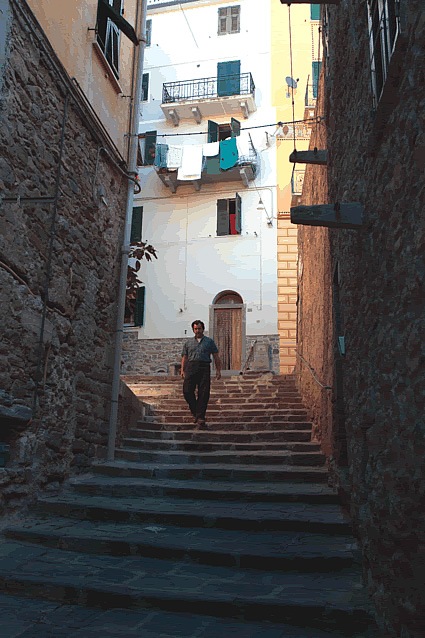 |
Cinque Terre was designated part of a larger UNESCO World Heritage Site in Italy to preserve the cultural and historic authenticity of villages such as Corniglia. Photo by E.J. Baumeister Jr. |
After a second breakfast at Bar Matteo in the village’s most hospitable piazza, you’ll be recognized by the staff. Many apartments are for rent, and many can be found on the Internet. The rates tend to be both
affordable and negotiable. With the Internet and a phone call, you should be able to negotiate accommodation for a longer stay than most vacationers contemplate.
Despite the presence of a few hardy tourists who do make it up the hill, Corniglia provides a taste of real Italy, not just within the village but beyond. Foreigners are treated not so much as necessary evils but as people
who might be interesting. Where are they from, they are asked. What it is like there? Do many Italians live there?
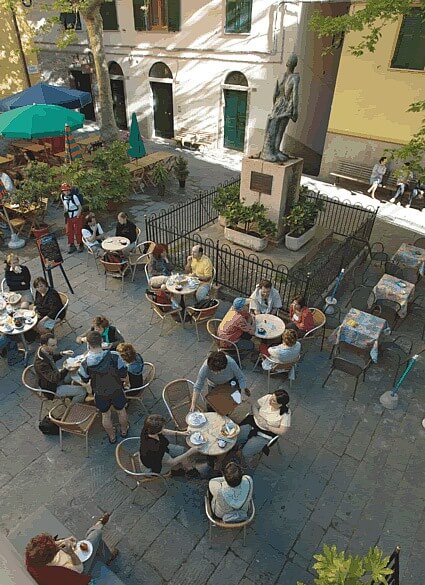 |
Since Corniglia is the only Cinque Terre village not on the coast, less tourists make the steep climb up to the town center where a delightful piazza awaits. Photo by E.J. Baumeister Jr. |
That railroad 300 feet below (it’s reachable by bus) offers a way to explore not only the other towns of Cinque Terre, but all of Liguria, and for that matter Italy and the rest of Europe. The train service keeps Corniglia
from being remote and offers a good lesson in how Europeans travel. From Corniglia, a weekend in Rome (four hours and a half) is easily possible, as are closer jaunts to Florence (around three hours) or Milan (three hours and a half).
There are a couple of very nice restaurants that feature local food and wine: La Posada, which is well signposted and at the top of the steps leading to the train station, and Cantina de Mananan, whose second name is A-gh’e-de-Tutti
(meaning A Little Bit of Everything). La Posada does well with local seafood. Cantina de Mananan’s chef has a wonderful imagination and a blackboard menu that changes frequently.
There are of course enough food shops to stock the modest kitchen you are likely to have in an apartment. The owners may have a little trouble communicating with you in English, but they can always find their grandchildren,
who will have no trouble at all.
For more information, see Lonely Planet's travel guide to Corniglia.
E.J. Baumeister Jr. spent 15 years as an editor for newspapers and 15 years as a producer in television for PBS and CBS before leaving the U.S. to teach journalism in
the formerly communist countries in Eastern Europe. In 2000, he stopped teaching to work as a writer and photographer. He lives in the village of Kaysersberg in Alsace, in the Rhine Valley of France.
|
